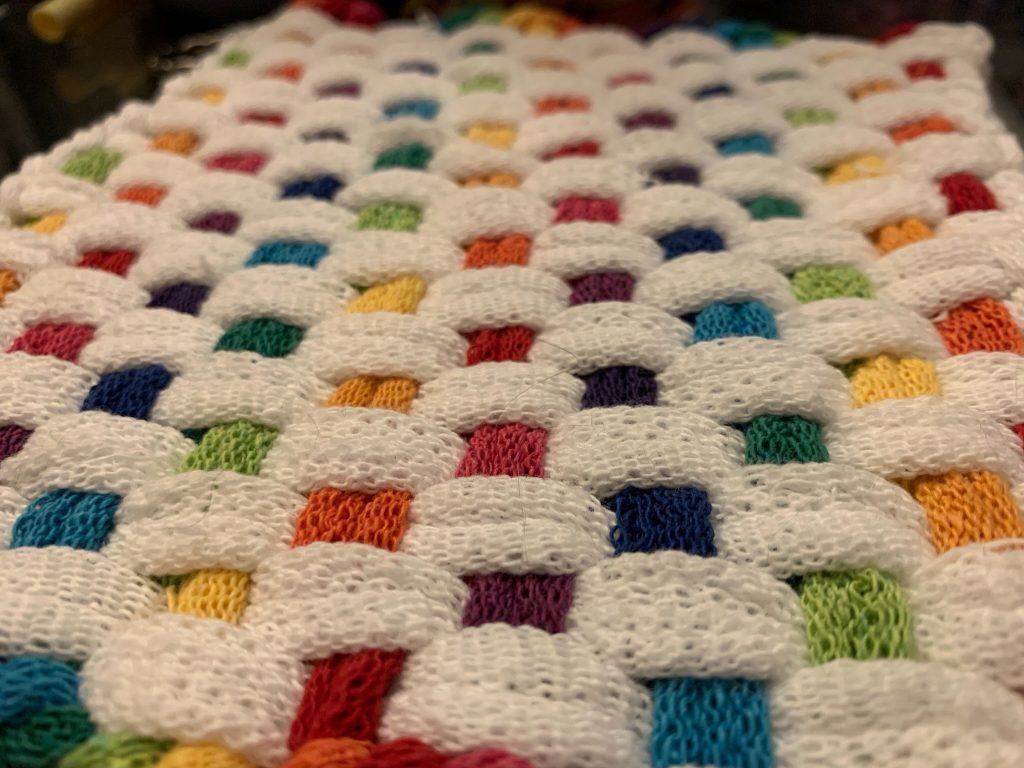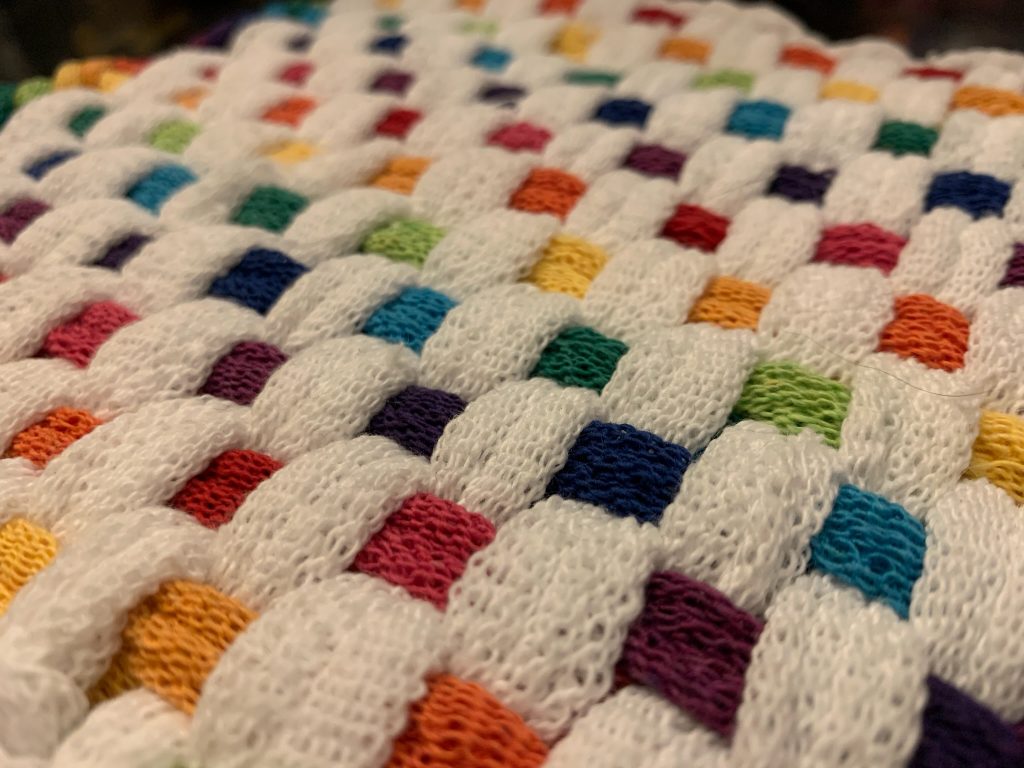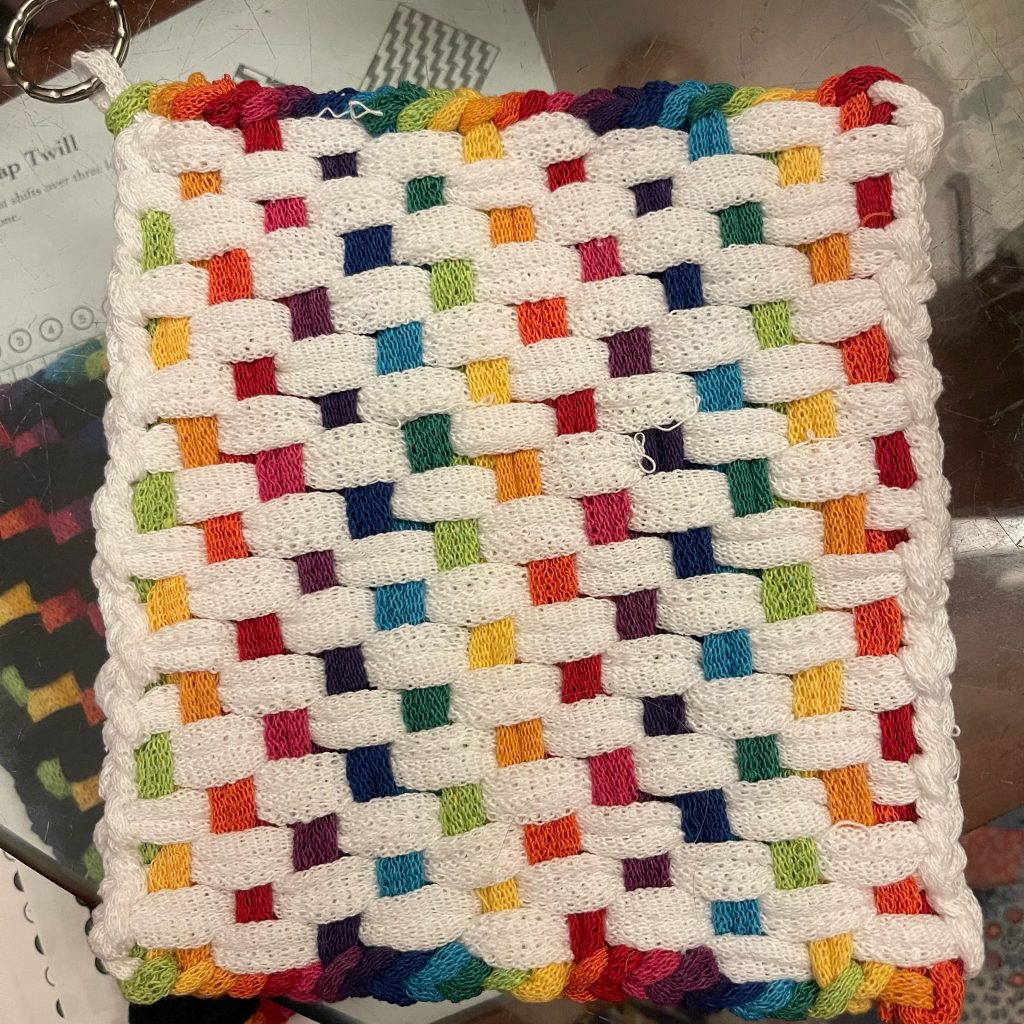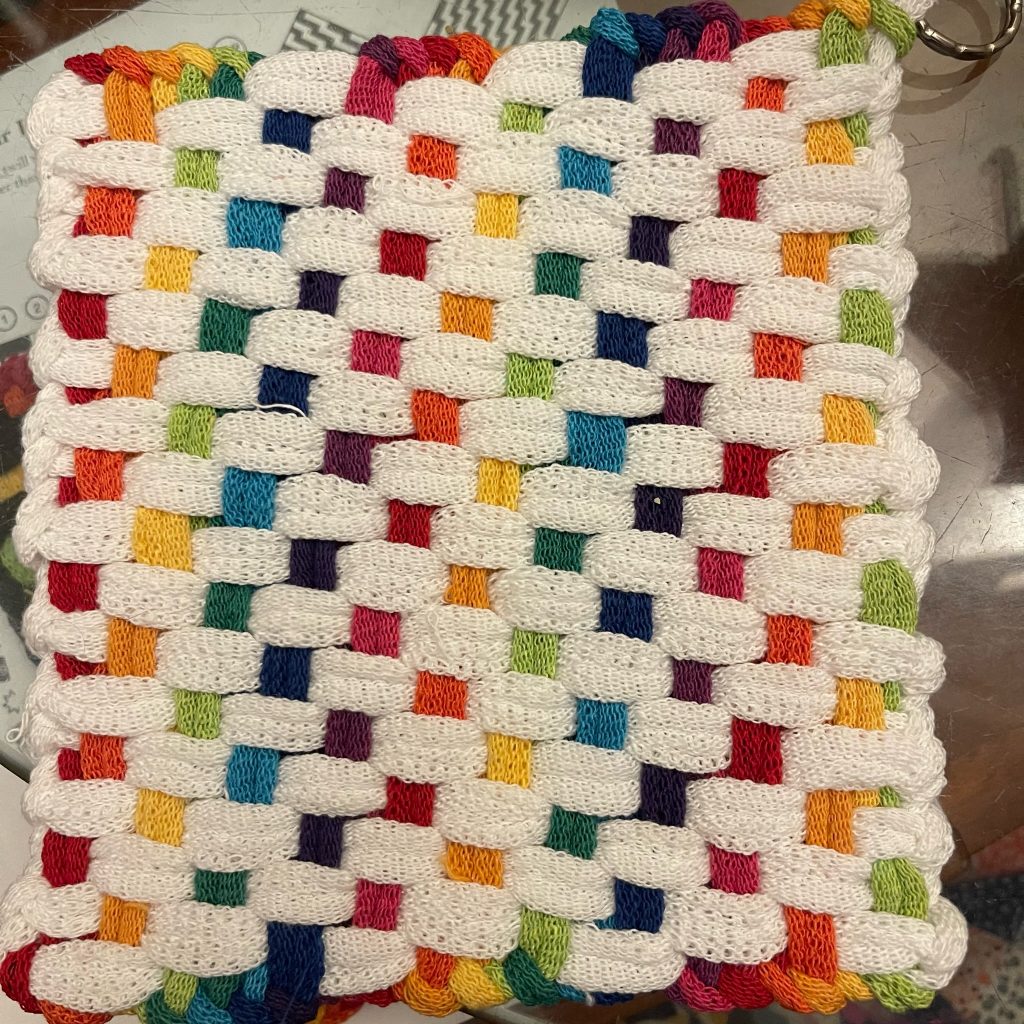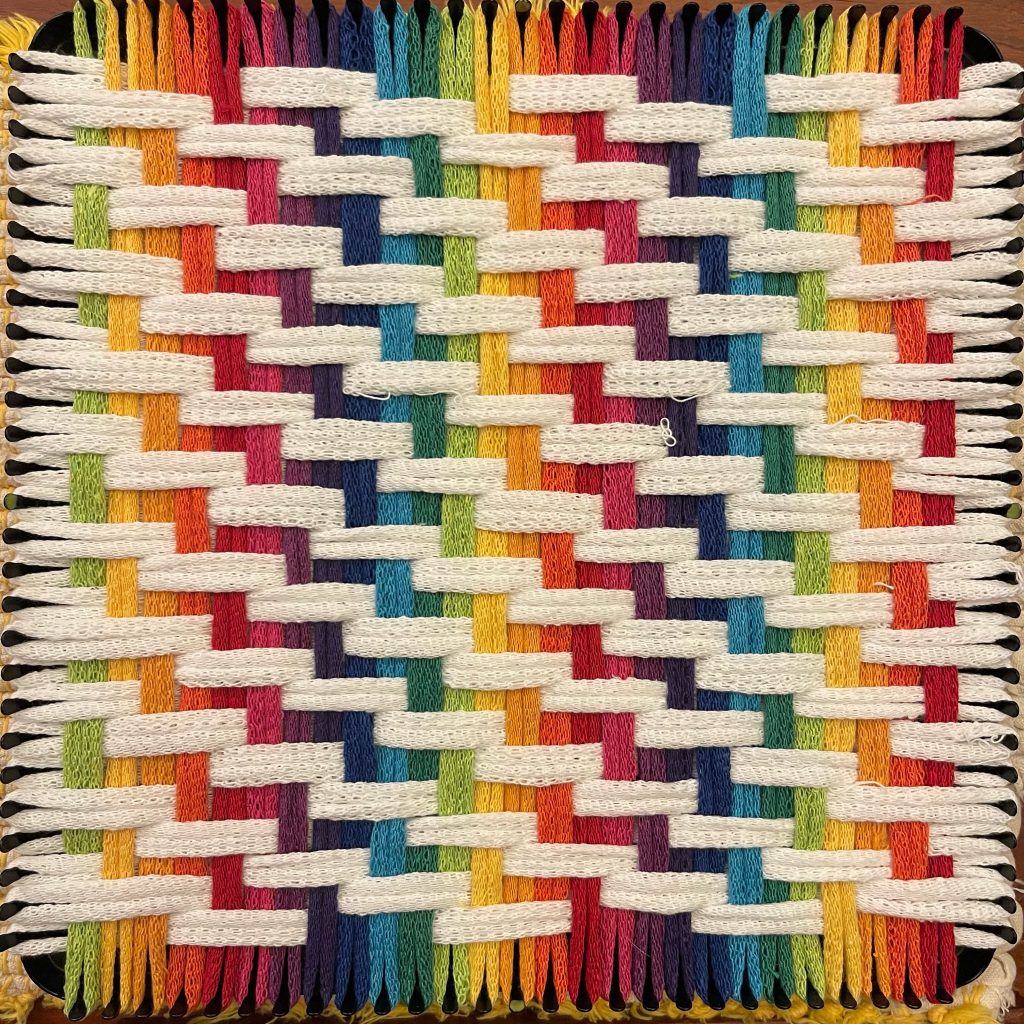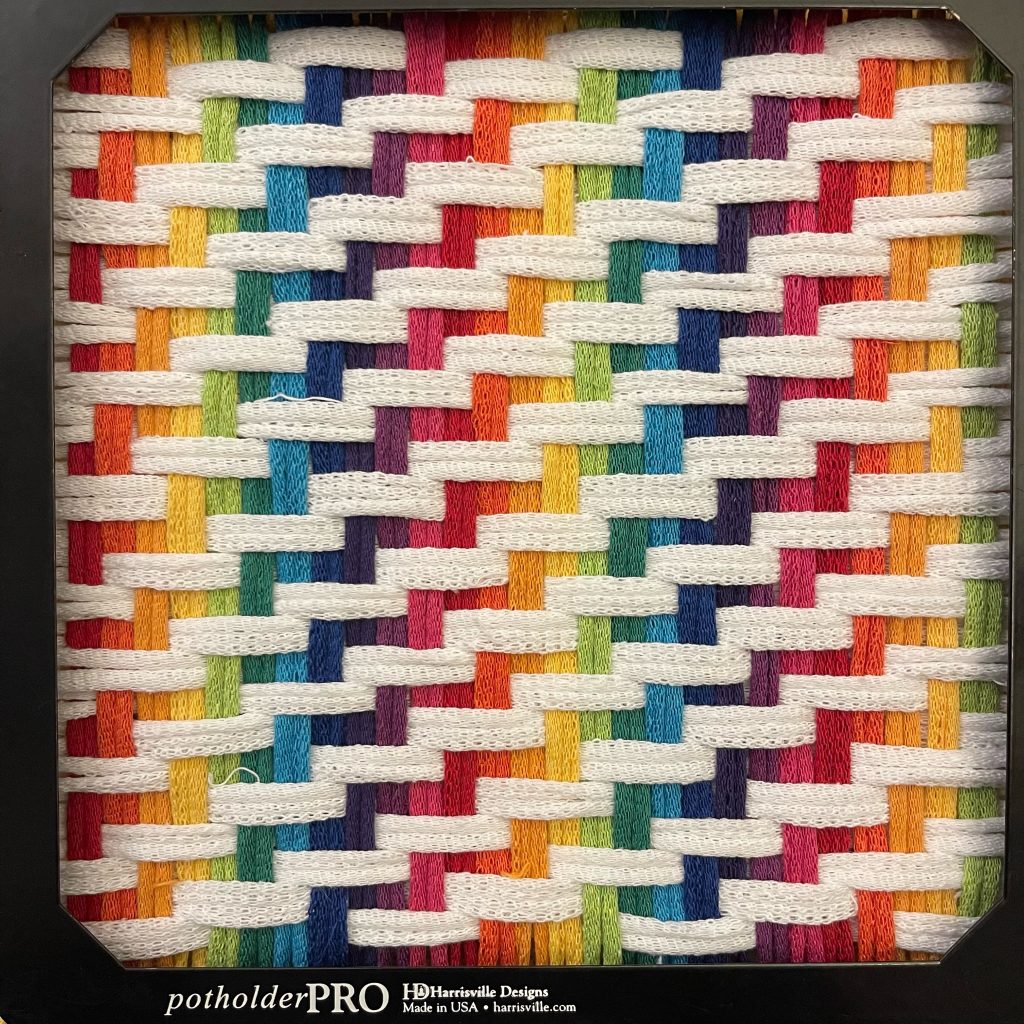Okay, this one has to be seen to be believed!
Because of the way the warp loops are hidden under the weft and only peek through occasionally, it almost looks like we’ve found a stash of multicolor tie-dyed loops, or maybe we’ve strung the loops at an angle, or some other kind of trickery — but as you can see from the “on the loom” photos, they’re just regular single-color loops woven in the normal fashion.
This uses the “four-four shift twill” pattern from our site. It’s a simple over-four/under-four sequence, so it weaves up really fast, but the offset from one row to the next is different from regular twill and that’s what produces this effect.
The appearance is symmetrical on the front and back sides of the potholder. The example shown here is pro size, but it should work just as well at a traditional size.
Piglet used a rainbow of eleven bright colors, but I suspect you’d also get pleasing results with a different color palette as long as you used a large number of colors. (This weave also looks good in a small number of colors but it no longer exhibits the startling rainbow effect seen here.)
This is a brand-new discovery so we’re still learning what it can do… If you give this a try, please post some photos and let us know how it turned out!
